Recently I played Tomb Raider 1 for the first time. After I got over the controls and very cheesy voice acting, I was struck by the clarity of its design. The word I want to use is “minimalistic”, but it’s more fundamental than that. “Restrained”, “pure”, “immersive” are other words I could use, but none of them are quite enough to capture what makes this game so great.
TR1 is a little hard to get into as a modern game. The old TR games use tank controls, where you rotate and move Lara relative to her current heading, as opposed to modern 3D games where you move relative to the camera. It felt clunky at first but after a while I really started to grasp its elegance.
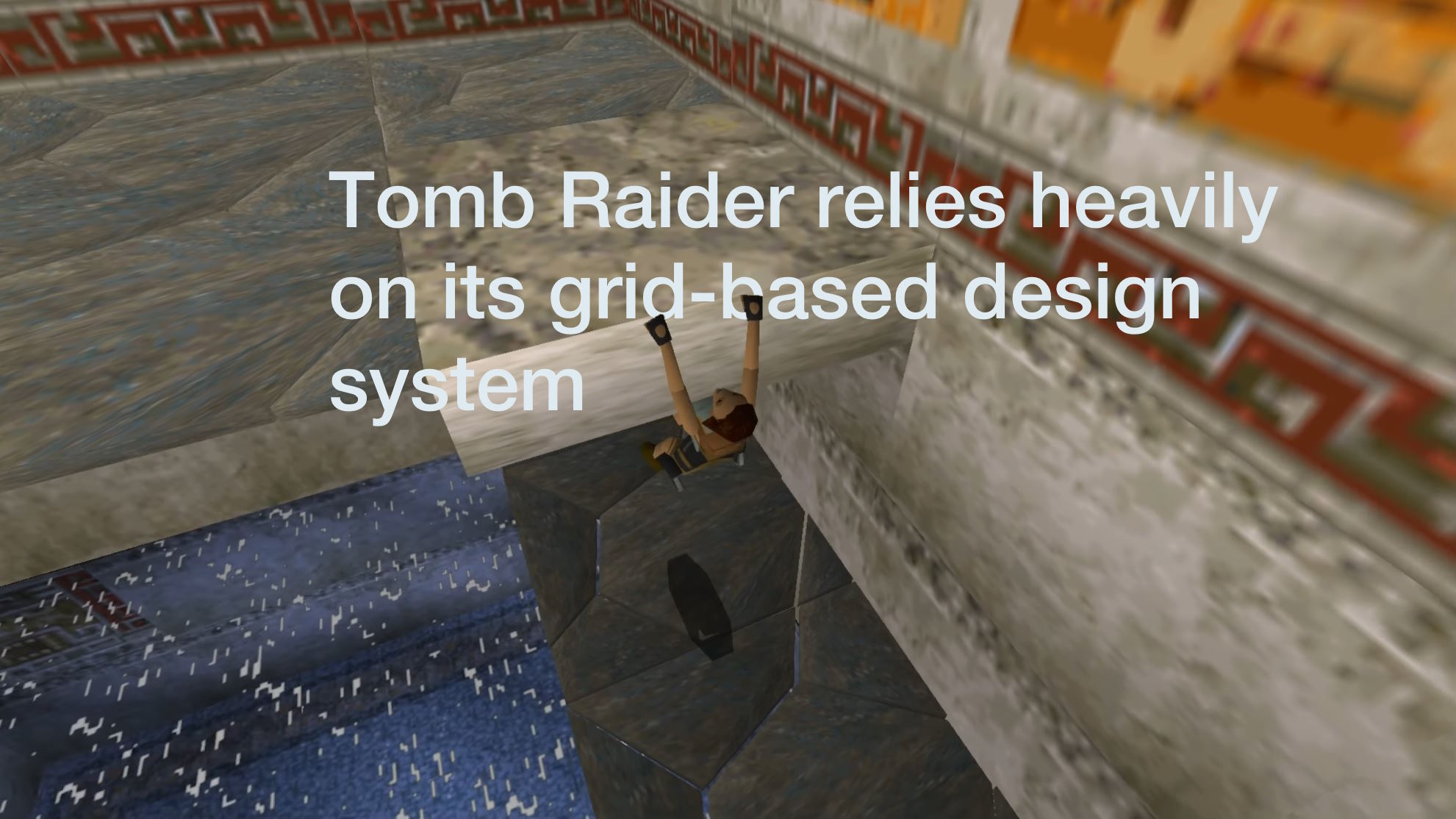
You see, Tomb Raider is built on a strict grid system, and Lara’s movement can be measured in squares. Every step is half a square, every running jump exactly two squares, and once you grasp the rules you know exactly what you can and cannot do. There is no ambiguity, no hidden walls, no sneaky missed jumps, it is a system that is completely consistent.
Gameplay is not fast paced, it is considered and challenging. You are expected to observe the surroundings and make your own way, using your knowledge of the movement rules, and few clues beyond that.
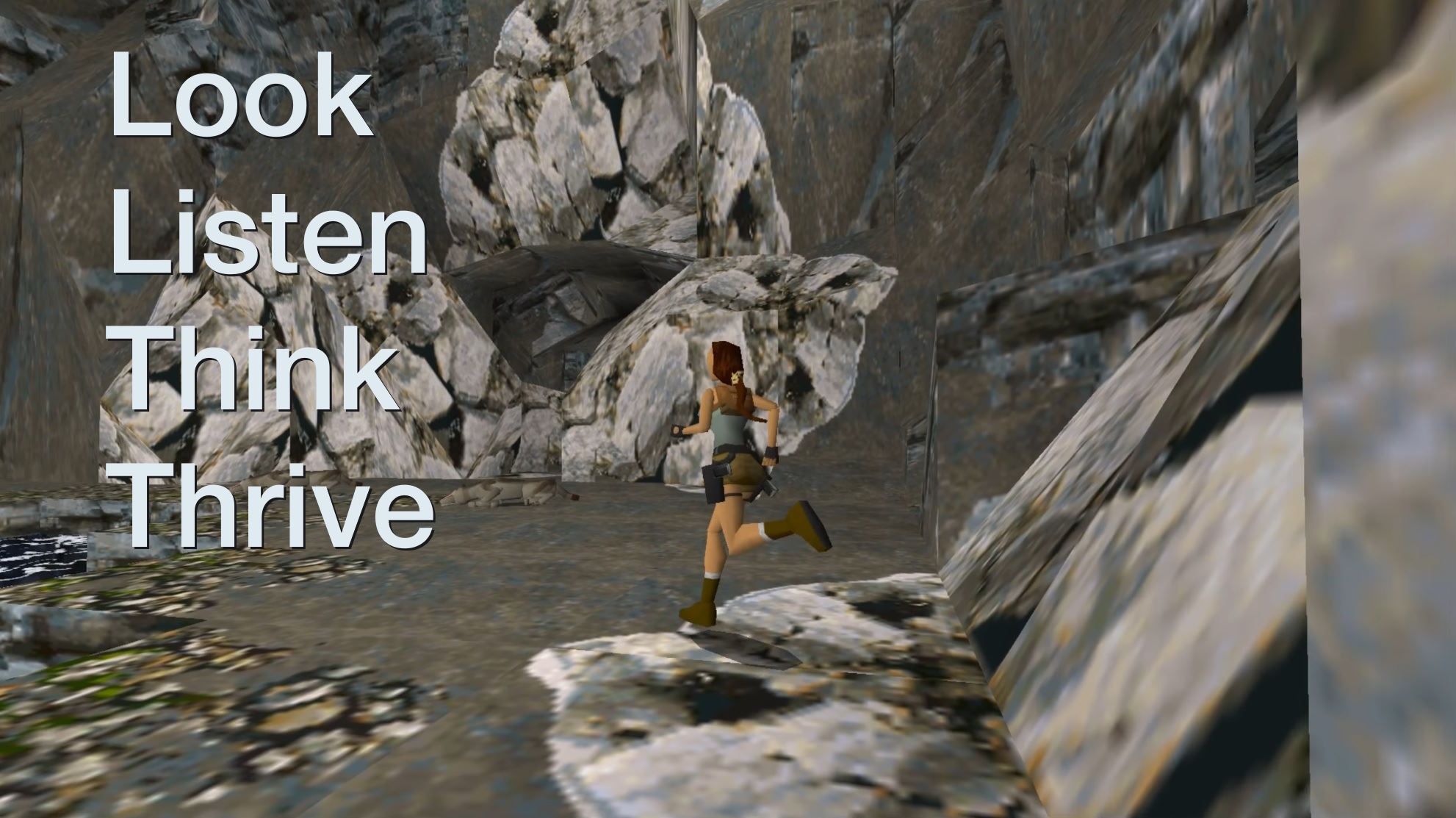
Speaking of which, a big part of Tomb Raider is sound. The theme is classic and well loved, but outside of fights TR’s music is generally very understated and ambient. Sometimes the game is silent entirely. This proves important because TR’s combat is punishingly hard, and enemy sounds are an important warning you’ll always be listening out for. Other times, sound provides clues about your environment that are critical to the game’s puzzles.
Listening for clues, observing the environment, watching out for traps and secrets, moving with care and precision - your discipline doing this will make or break your adventure. Tomb Raider is incredibly tense and demands you give it sustained focus.
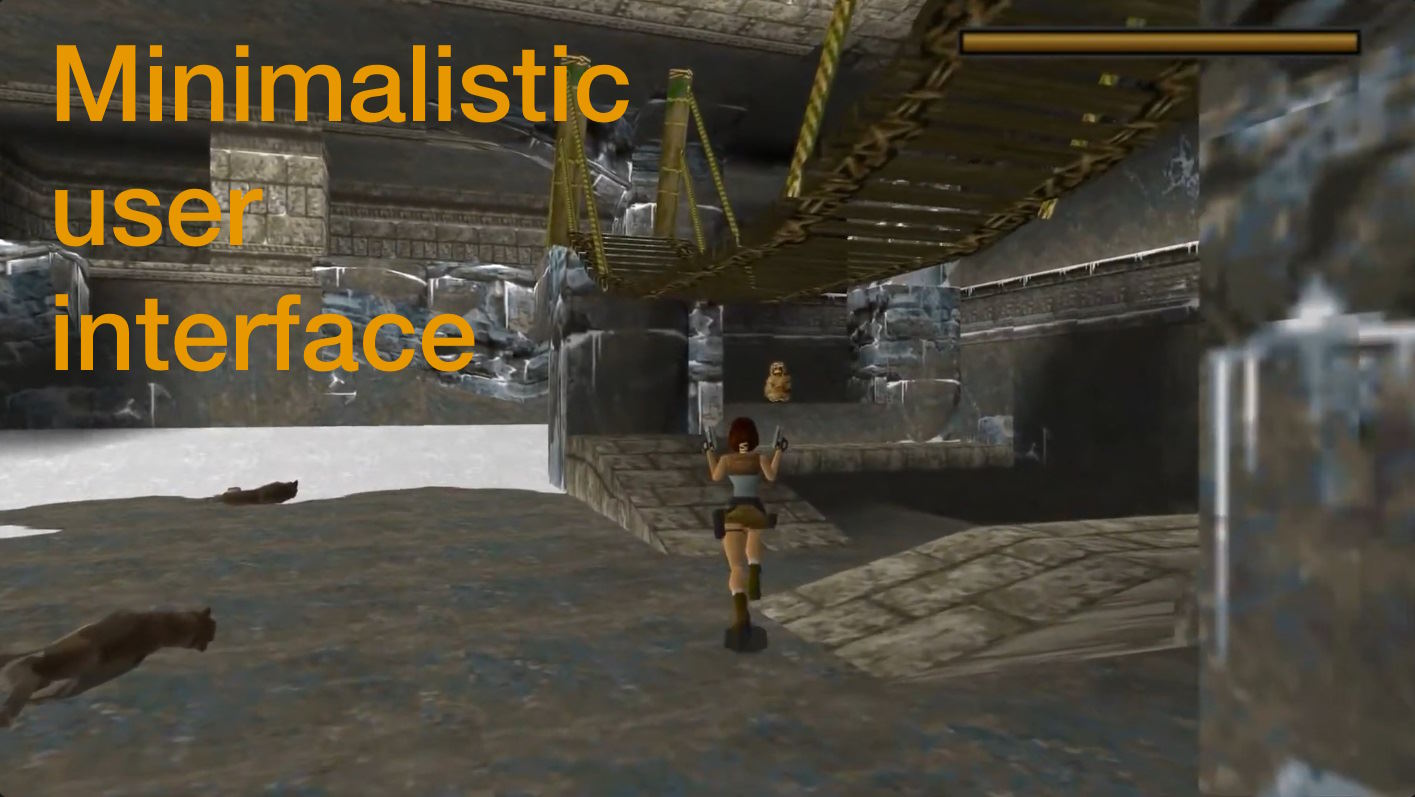
I think that’s also why Tomb Raider has such a minimal UI. The user interface is very stripped back: unless you’re armed or in poor health, there’s no heads up display, and the health bar when it does appear comes in very understated gold. A nice nod to the treasure theme but which also prevents the HUD distracting from the environment.
There’s no radio chatter either (unlike certain other TR games…) You really do feel like a solo adventurer, completely self-reliant in a hostile environment. When you finally scale the game’s awesome structures, it feels like conquering a physical and metaphorical mountain.
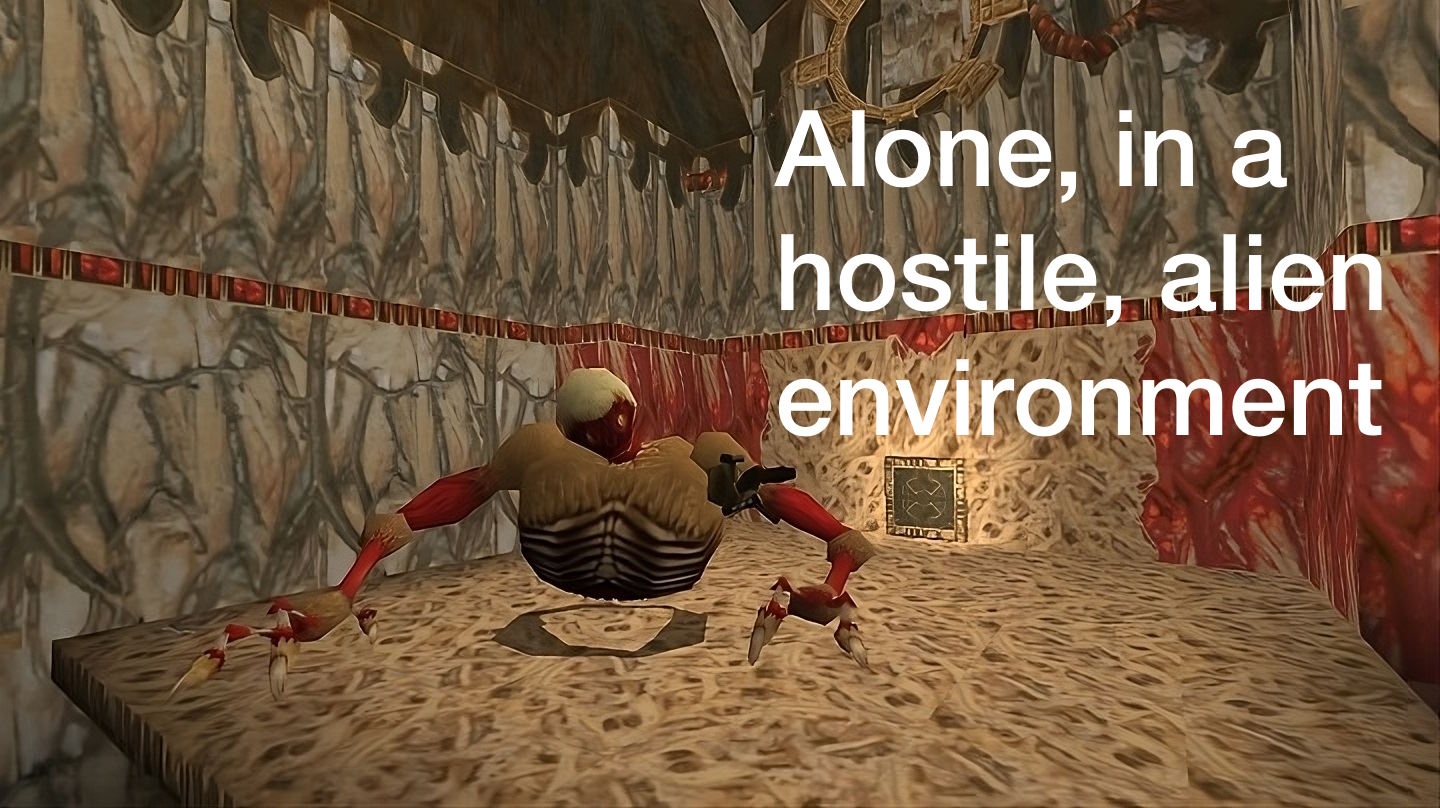
Loneliness helps the supernatural elements land a lot better too, like when Lara suddenly runs into a T-Rex in the lost valley - or the Gigeresque body horror of Atlantis. These moments just wouldn’t work if we had to explain to a radio sidekick how dinosaurs had survived, or why Atlanteans exist. It would be a distraction, and it would lose its mystery.
TR1 then is very much about focus - on the world, on the player, on the movement - and with that focus comes the player’s strong sense of self. I very much feel like I am the one controlling Lara, I am solving the puzzles, I am beating the levels.
Yes, the tank controls are granular, but that’s partly the point: you have to input every movement Lara needs to move, yourself. If she needs to turn a corner, you must rotate her. If she needs to grab a ledge, you must put her guns away. Nothing happens automatically, every success is your own.
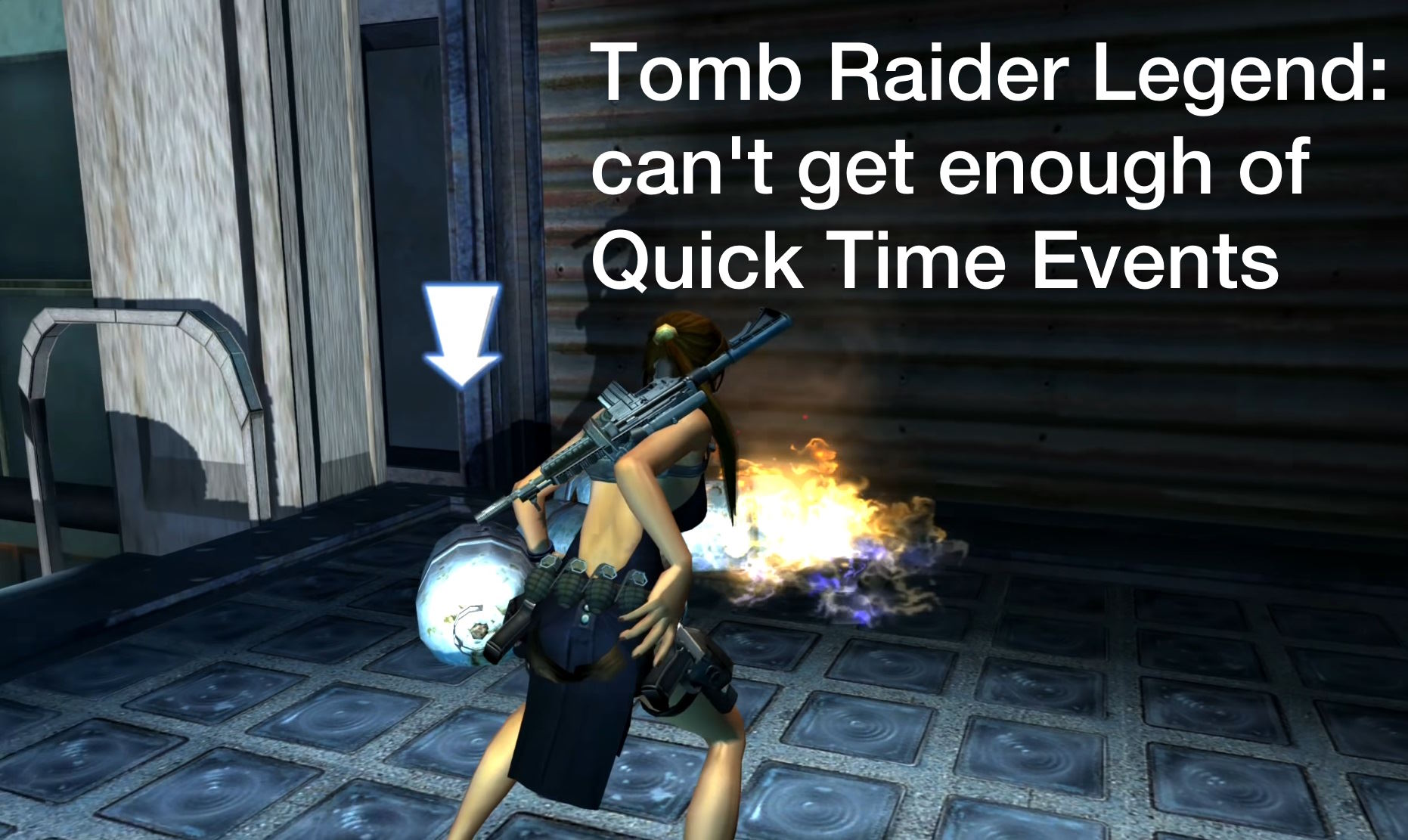
Compare that to Tomb Raider Anniversary or Legend, where the controls are much more automated. Lara will grab ledges automatically; you can mash O to do acrobatics, and the game leans very heavily on Quick Time Events.
It’s not an invalid design philosophy, but when I play Legend, I think, “wow, look at the cool thing Lara can do” - whereas in TR1 I think “look at the cool thing I did“. The new controls are more fluid and fast paced, but they lose some sense of accomplishment.
That’s not to say TR1 is perfect. The combat is weak, and camera flails about when enemies are nearby, and killing enemies is a chore. But I think you have to forgive that for a game that was innovating so much.
Which brings me onto the remaster. It’s not clear, right now, how the re-releases will handle the original game’s design. Will they alter the tank controls, or will they stick proudly to the original system? Will they improve the combat, or leave it as is? Do you think the game’s systems still hold up, or is Tomb Raider 1996 strictly an ancient relic?